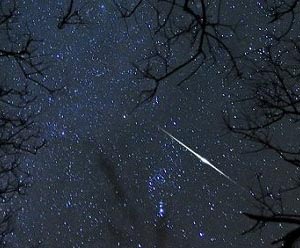Skywatchers always have their heads in the clouds and a crick in their necks but they are fascinated and awed by the cosmos and I am proud to be among them. Curiosity is a singular human trait that helps us to continually learn about the universe and our place in it.
2013 was an exceptional year for skywatching. We had some surprises and some disappointments, but as we head into 2014, the new year promises to provide a similar collection of events to watch the skies for, including some possible new meteor showers, a rare type of eclipse, and a comet near-miss for the planet Mars!
January 2/3 — The Quadrantid meteor shower peaks
Possibly one of the best meteor showers of this year, the Quadrantids, were something of a disappointment a year ago, mostly because the bright moon in the sky washed out the show. This year, we're coming out of a New Moon from January 1, so there should be prime viewing conditions. Boötes, the constellation that the meteor shower appears to stream out of, climbs above the eastern horizon right around midnight (local time), and will be up until well after sunrise.
The Quadrantids, which may originate from an asteroid named 2003 EH1, rather than a comet, have produced between 80-150 meteors per hour in past years. So, if you can get away from major sources of light pollution and you have clear enough skies, it should be a great show. If it happens to be overcast where you are (or possibly too cold to venture outside), you can see it via the Slooh Space Camera website on Friday, January 3rd, starting at shortly after 3 p.m. Eastern Time.
January 10 — Possible new meteor shower from Comet ISON
Comet C/2012 S1 (ISON) may be dead and gone, but it may have left behind a little gift for us. As the comet approached the sun, it crossed the path of Earth's orbit at the beginning of November. Starting around January 10, Earth will swing through that same region of its orbit, and it's possible that ISON may have left behind enough debris from its passage to give us a brand new meteor shower for a few days. Science@NASA produced a great video talking about the potential phenomenon:
The fine comet dust may not become visible as actual meteors streaking through the sky, but, as the video narrator says, it could possibly produce brilliant noctilucent clouds in the sky. Also, since Comet ISON has already surprised us many times so far, creating a brand new annual meteor shower could be its final gift to skywatchers.

No comments:
Post a Comment
Through this ever open gate
None come too early
None too late
Thanks for dropping in ... the PICs